My one biggest regret from my one visit to Six Flags Magic Mountain in Valencia, California in 2011 isn't that I didn't take any photos (besides a selfie with a friend). It's that I didn't visit the Sky Tower while it was still open and while the elevator was still taking park visitors to the top observation deck.

I don't remember why. Maybe I didn't know about it—despite the fact that it's a beacon for all those in the Valencia area. Maybe I didn't know how to get up there. Maybe I never thought something like that would ever close to the public—which it did, in 2014.
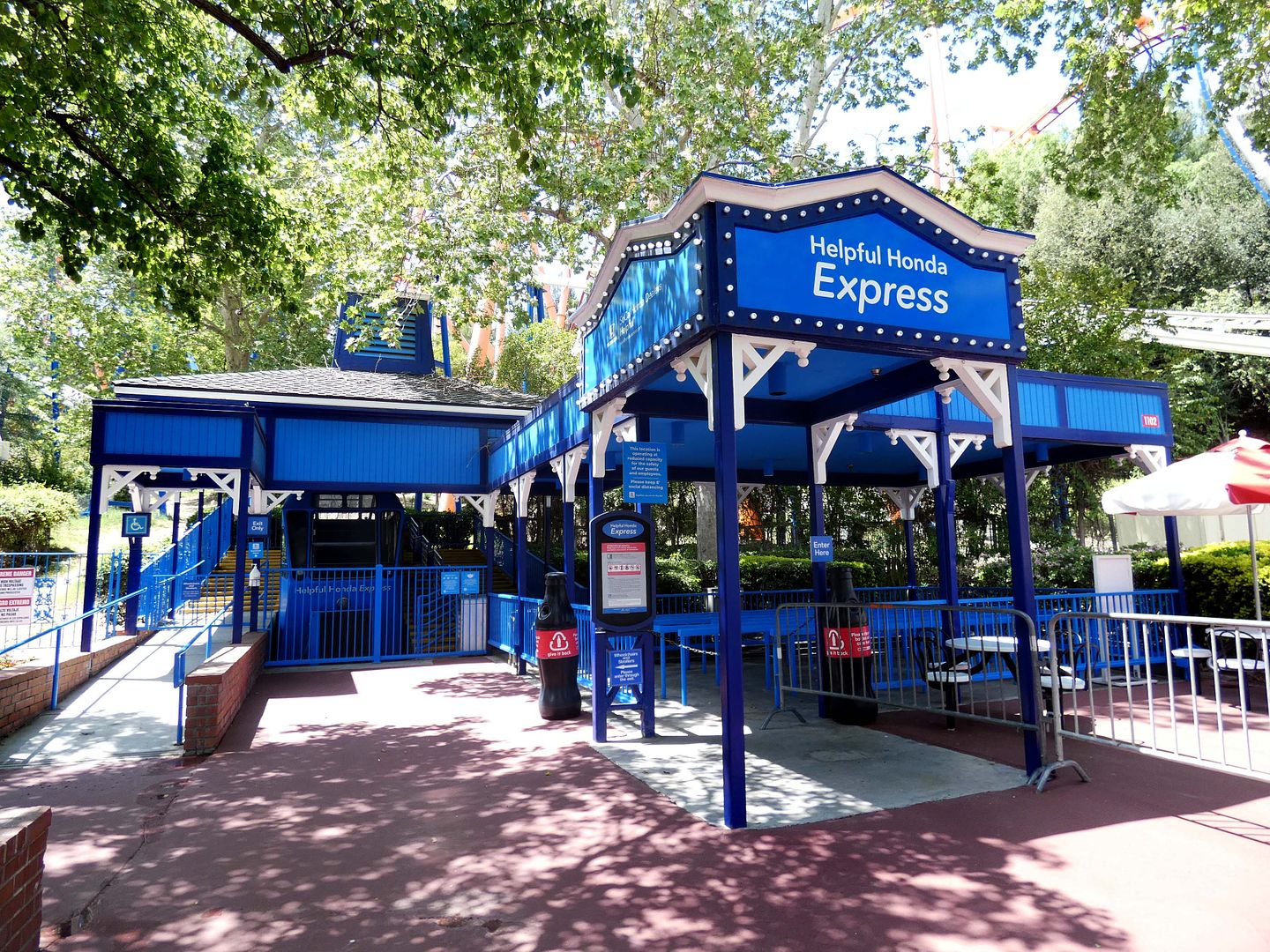
One of the things I discovered during my year-long exploration of Magic Mountain is that the easiest way to get to the tower is by taking the funicular, known since 2016 as the "Helpful Honda Express."
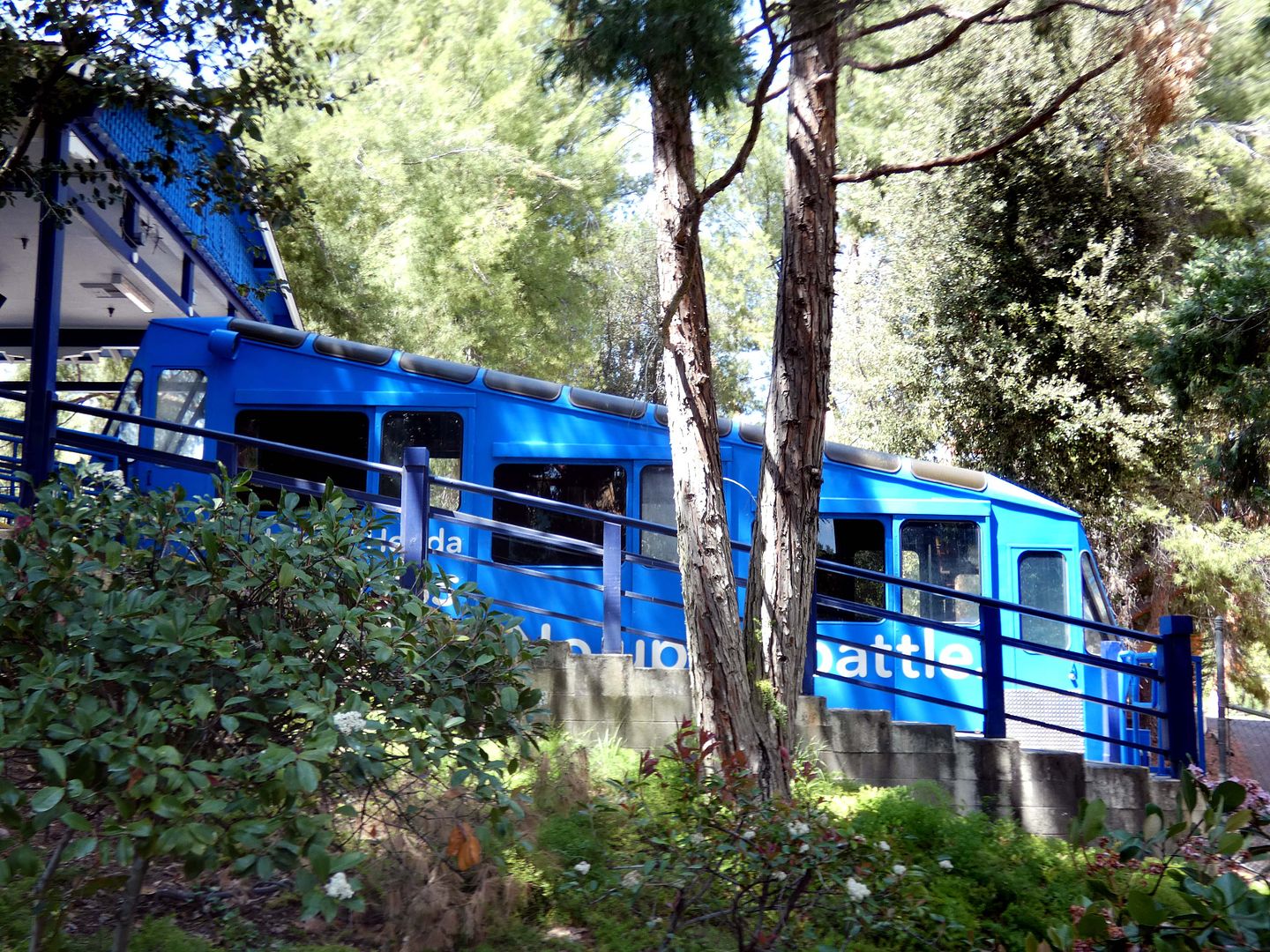
If you've ever ridden Angel's Flight in Downtown Los Angeles, you're already familiar with the tiny incline railway known as the funicular. Turns out, the original Magic Mountain had its own "Swiss-style" funicular to take guests 120 feet up to the summit of the "mountain"—which is really just a natural 110-foot hill that the developers didn't plow but simply built around.
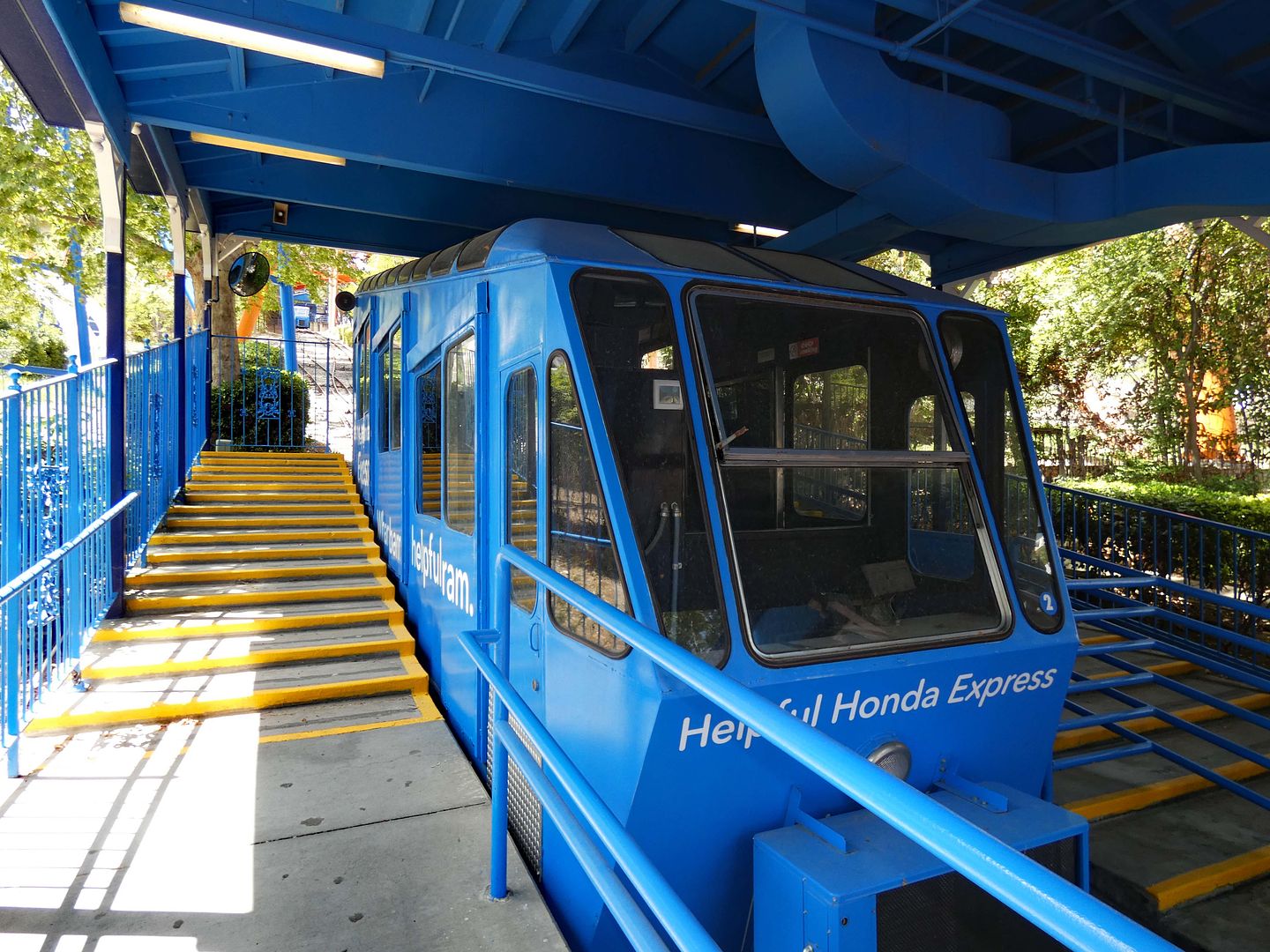
The funicular was built in 1970 by Korneuburg Shipbuilding Company Austria, which was affiliated with the then-relatively new Swiss firm Intamin AG (whose name is a portmanteau of INTernational AMusement INstallations) of Wollerau, Switzerland.
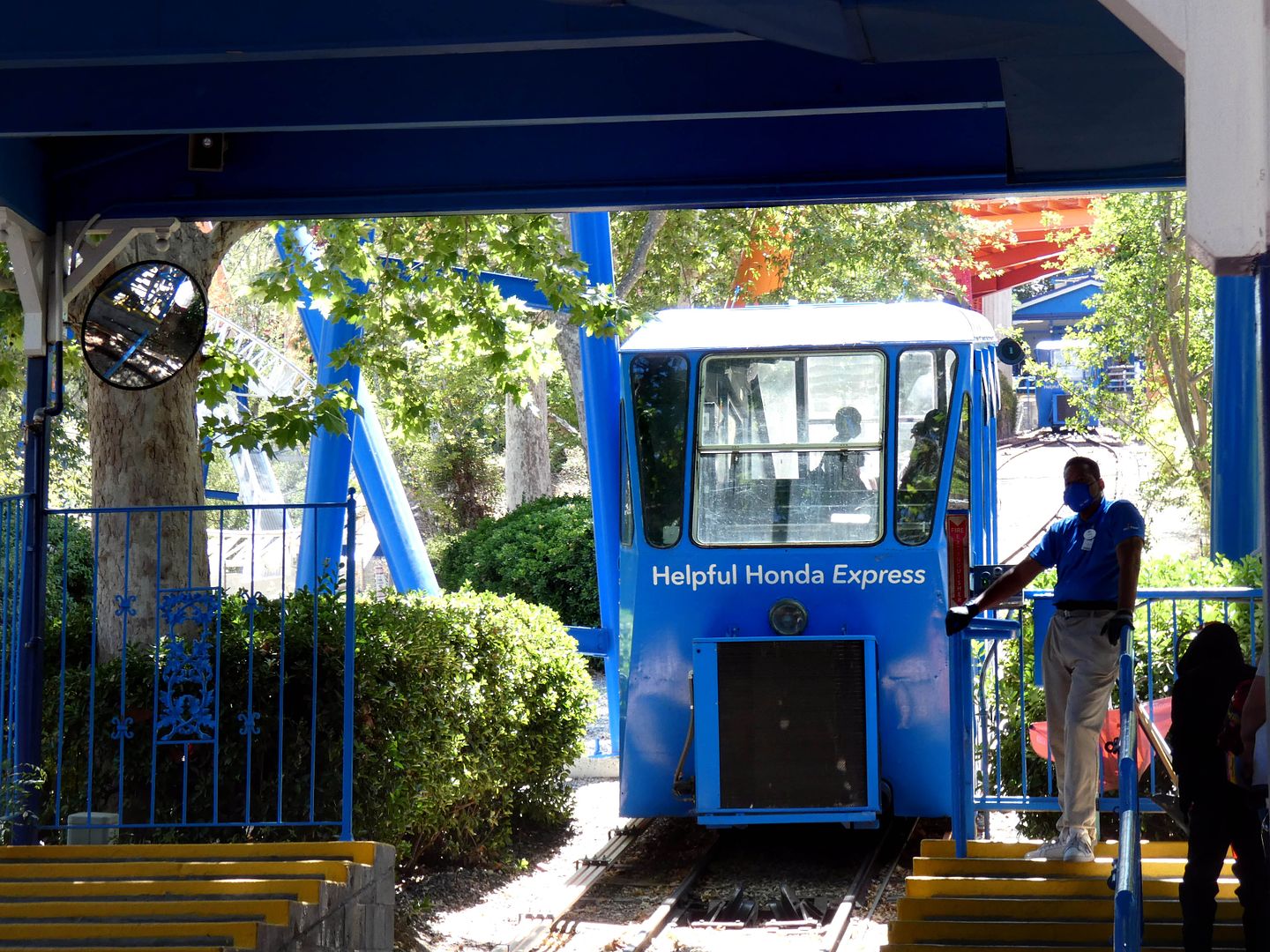
It's the last remainder of the in-park transportation systems that acted as "rides," like the two old-time trains (including the Grand Centennial Excursion), the Eagle's Flight gondola ride/ski lift, and the Metro automated monorail system (a.k.a. the "People Mover").
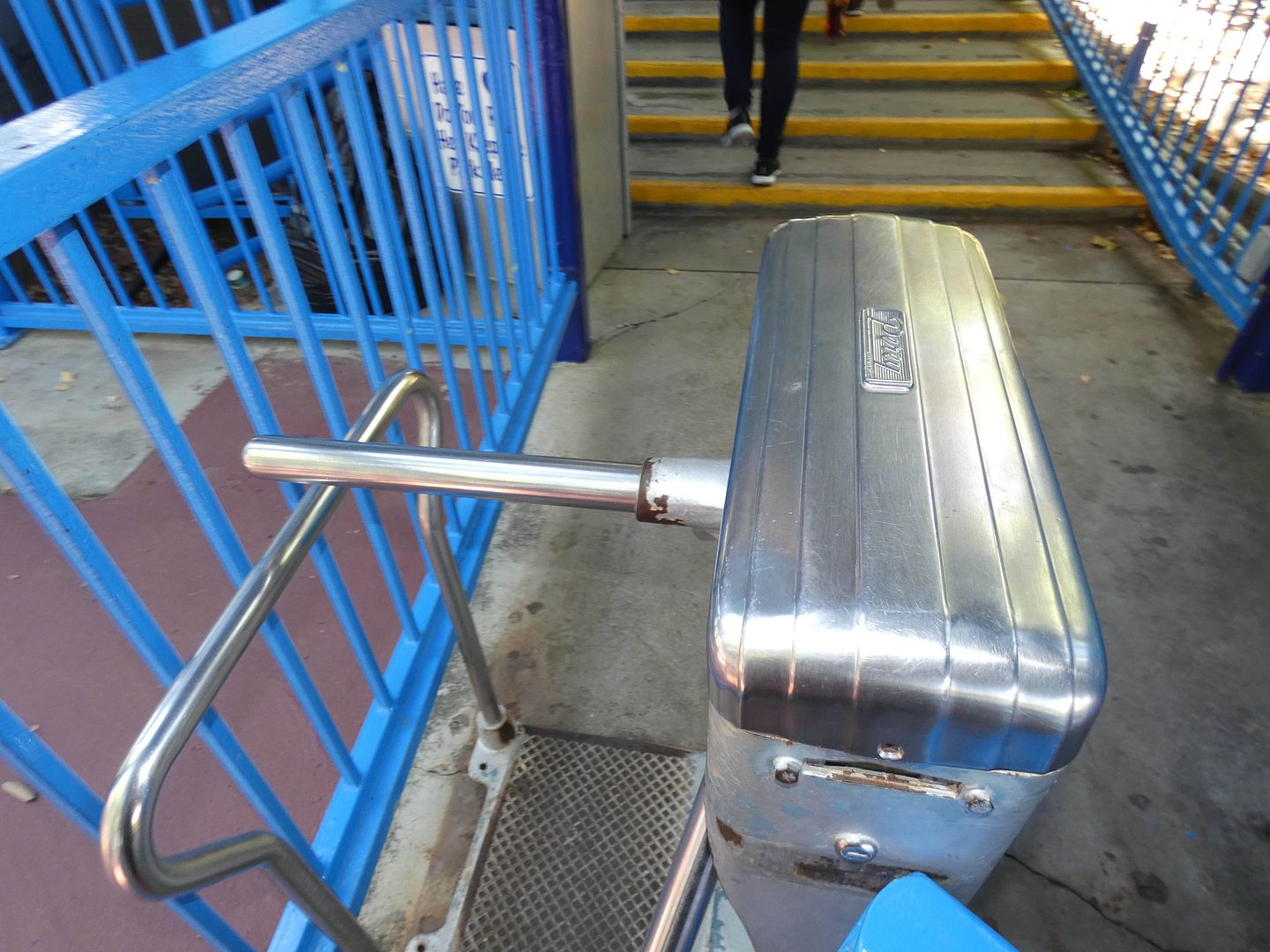
Amazingly, it's still in operation—and you can still come aboard and pretend as though you're ascending the Alps.
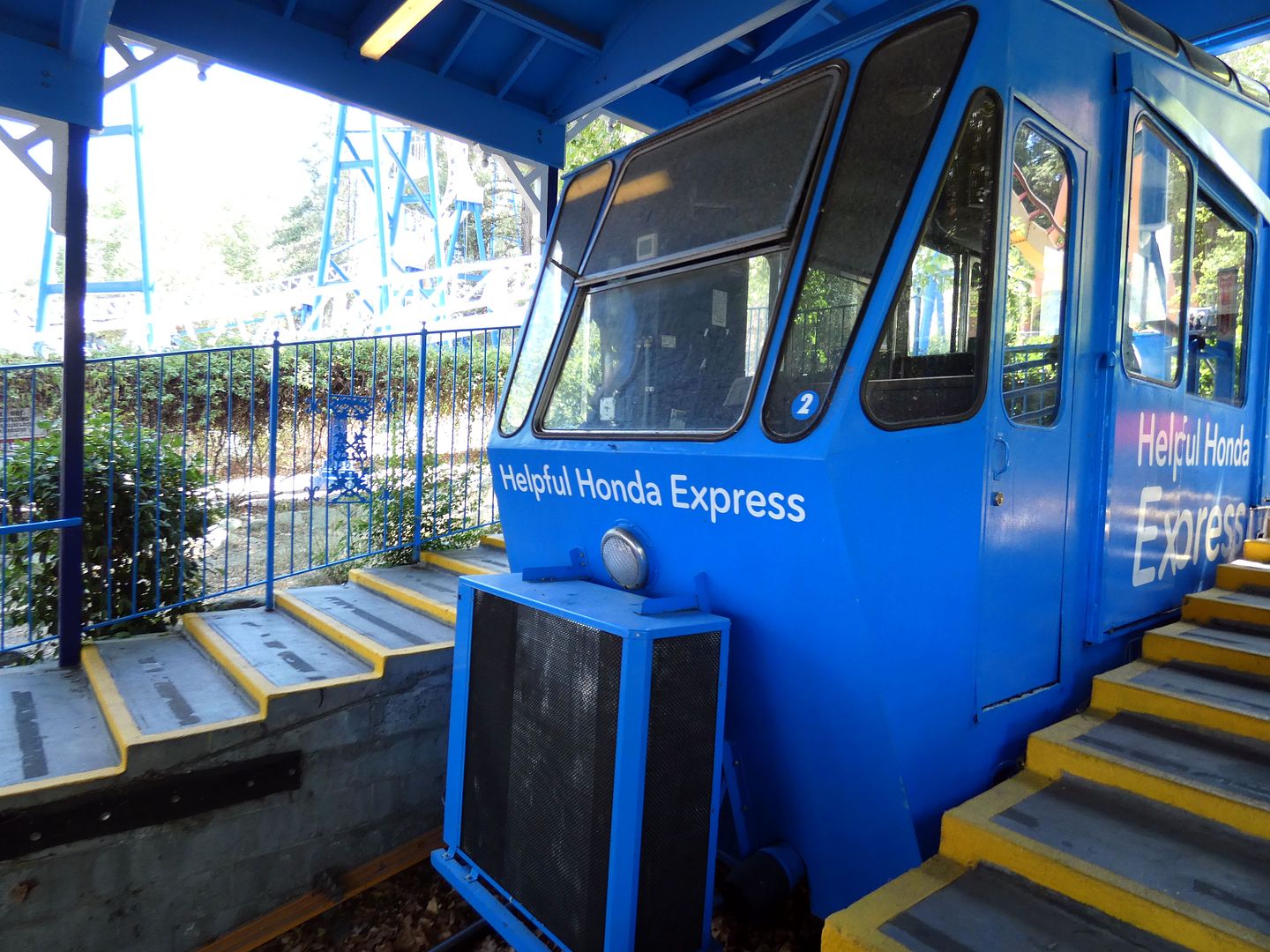
As with Angel's Flight, there are two stations—one at the bottom and one at the top. But unlike Angel's Flight, there's only one car to take you up and down the hill.

Upon the park's opening, it was known simply as the "Funicular"—but from 1988 to 2016, it was rebranded as the Orient Express.
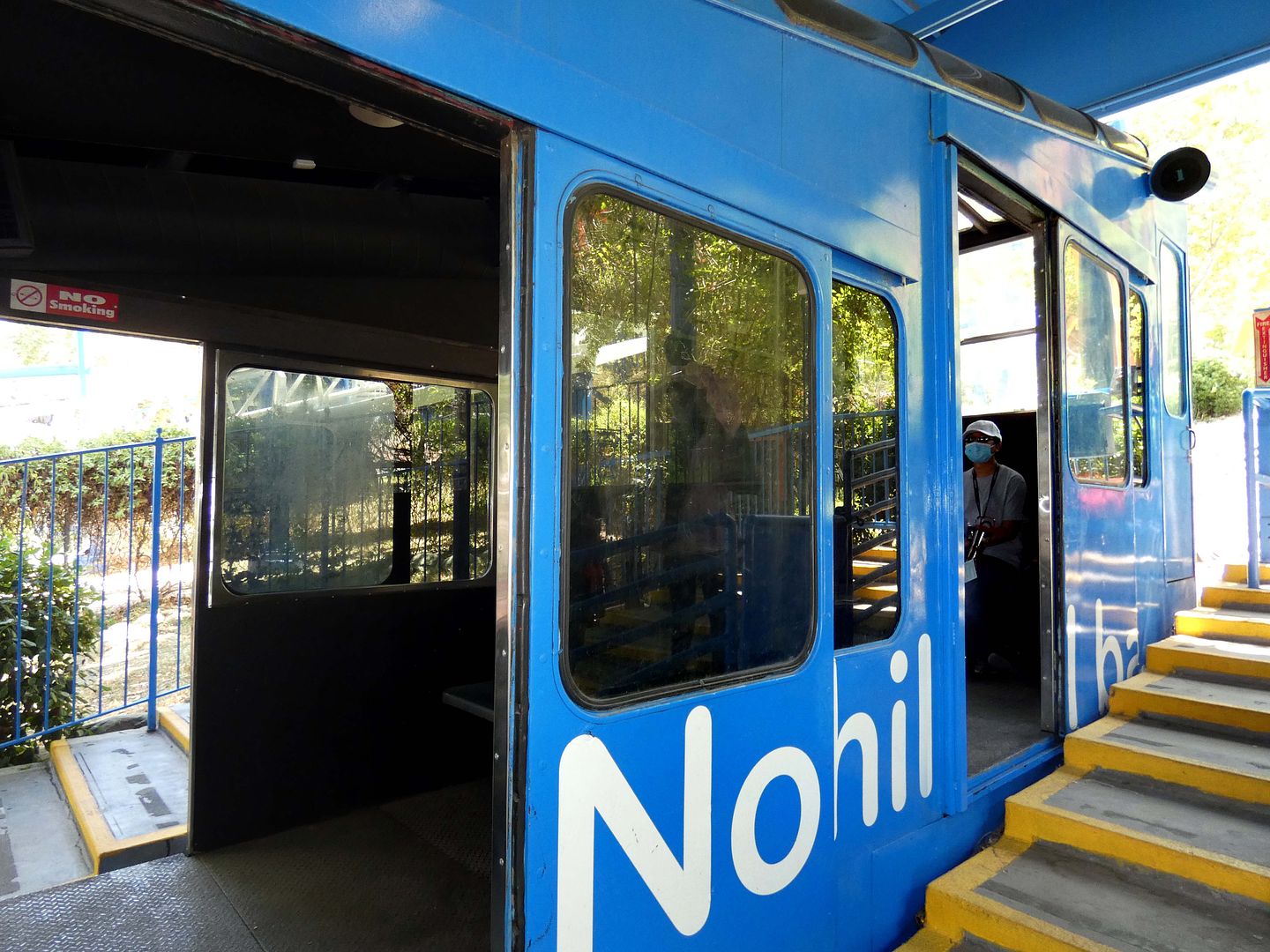
Its red color has been foregone for a Honda blue hue.

Although it opened with a live operator who functioned as a kind of tour guide, it's now automated.
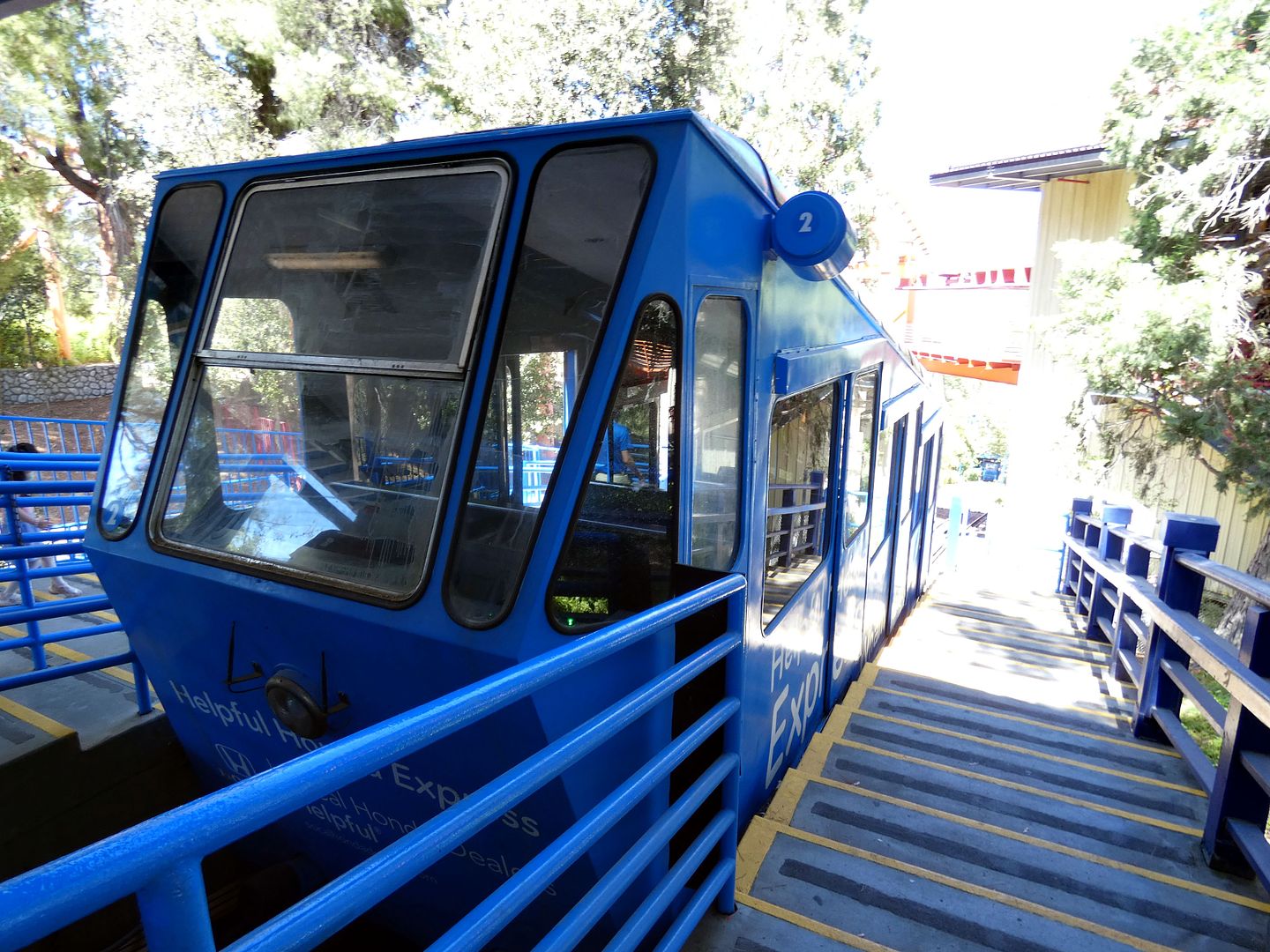
The "ride operator" at the bottom station told me to put my camera away and not take any photos inside the car—which was OK, because it wasn't very interesting inside anyway (although the ride itself was fun).
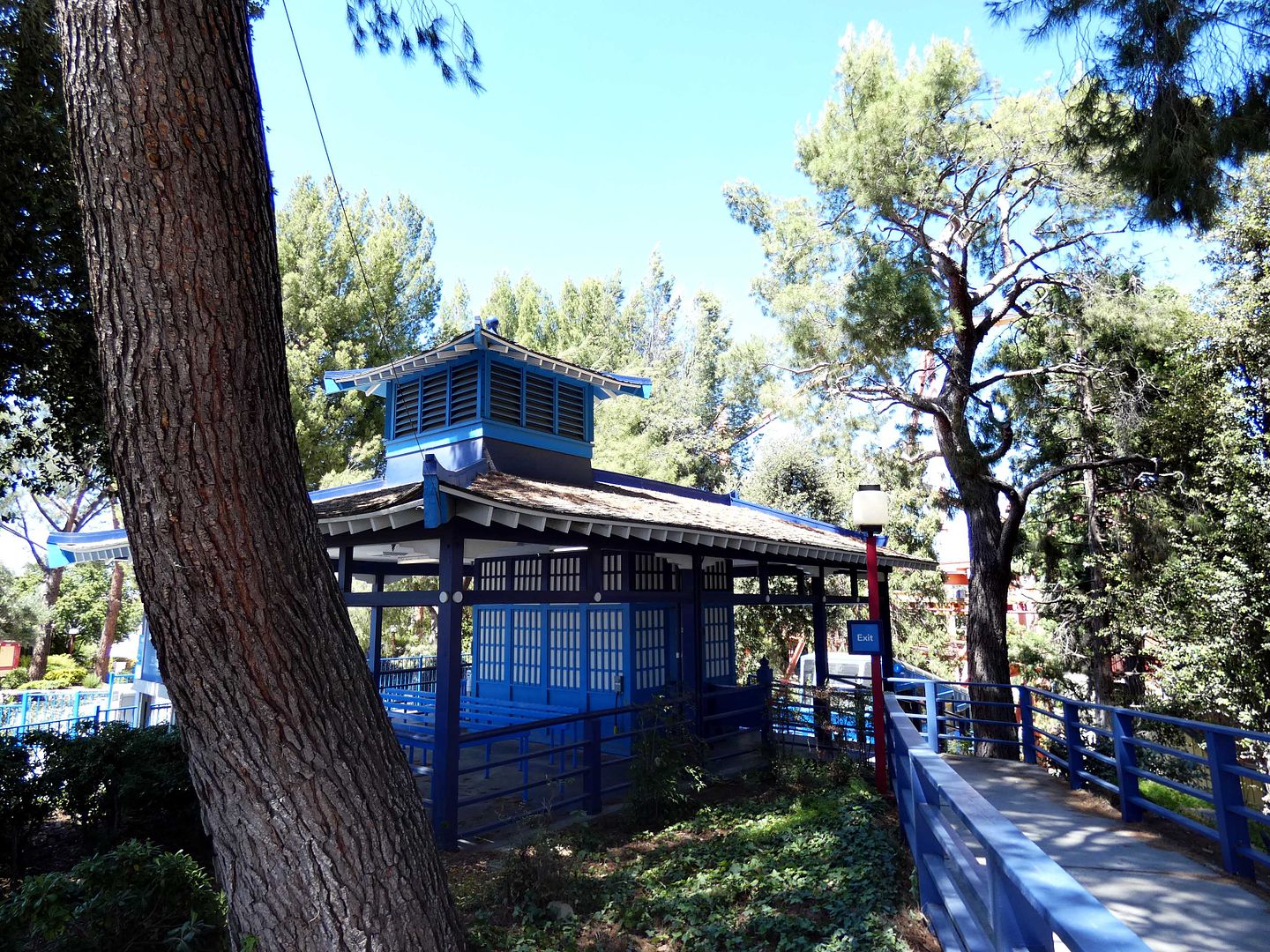
At the top station, you can see more of the design that carried over from the funicular's days as the "Orient Express."

That must be because it drops you off in an area of the park that's still retained its Asian theme from 1971.

It's Samurai Summit—an original themed area that once housed the Magic Pagoda and the Oriental Gardens.
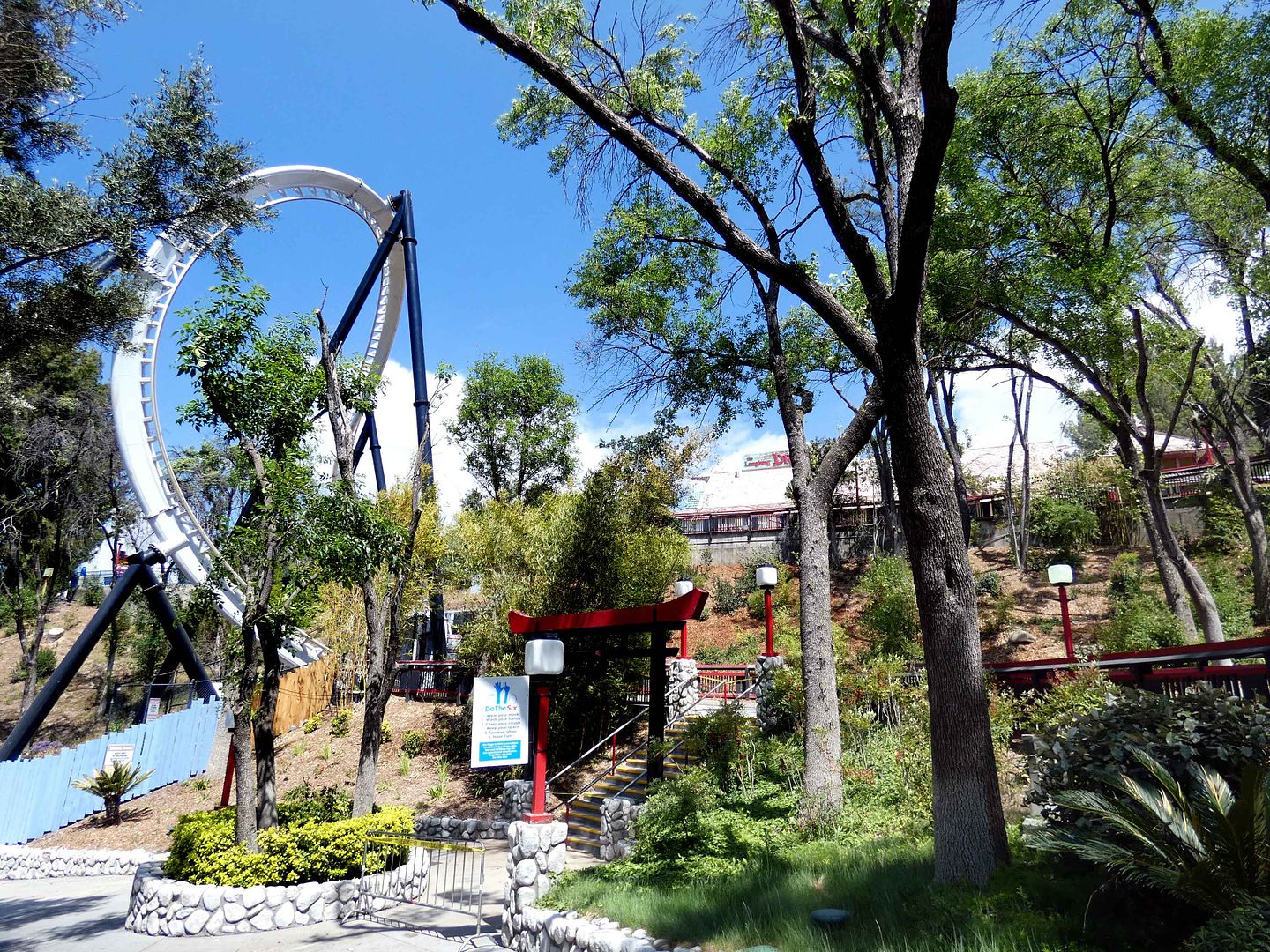
Samurai Summit was restored in 2018 and is now home to the Ninja and Tatsu rollercoasters...
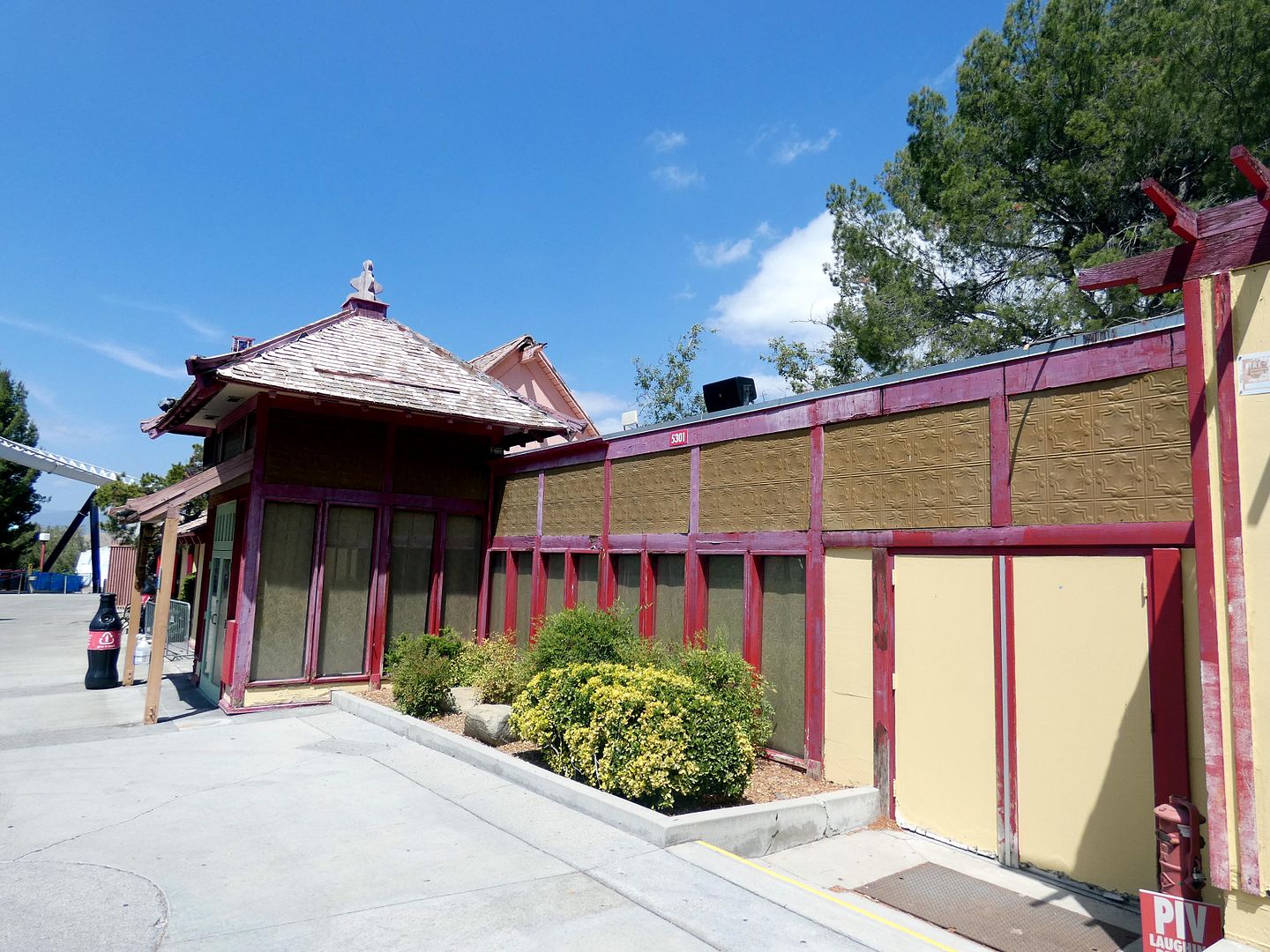
...as well as the former Four Winds restaurant (original to the park's opening)...

...which now operates as The Laughing Dragon Pizza Company.

The Ninja rollercoaster's boarding/queue area is housed in the old top station for the Dragon car ride, and dates back to 1974.
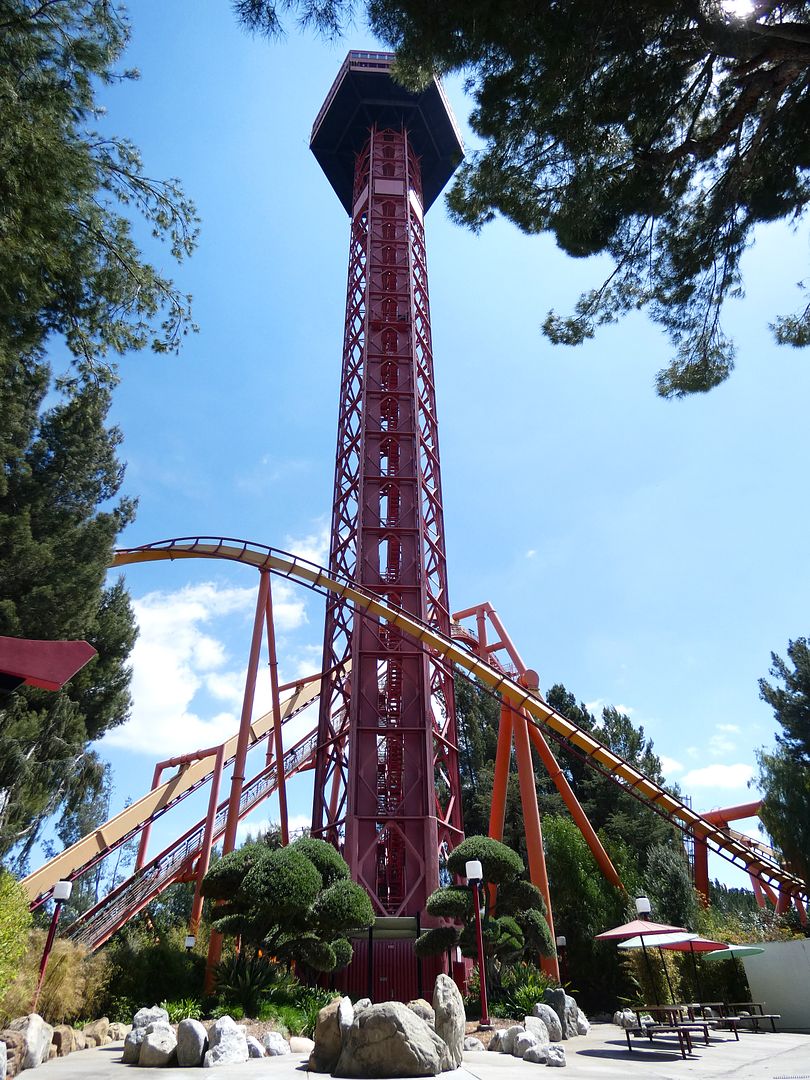
For me, the highlight of Samurai Summit—and "the one that got away"—is the former observation tower, built by Intamin and installed by Los Angeles-based firm Aggressive Erectors & Bridgemen Inc., which had use a giant crane to lift the observation platform and set it in place.
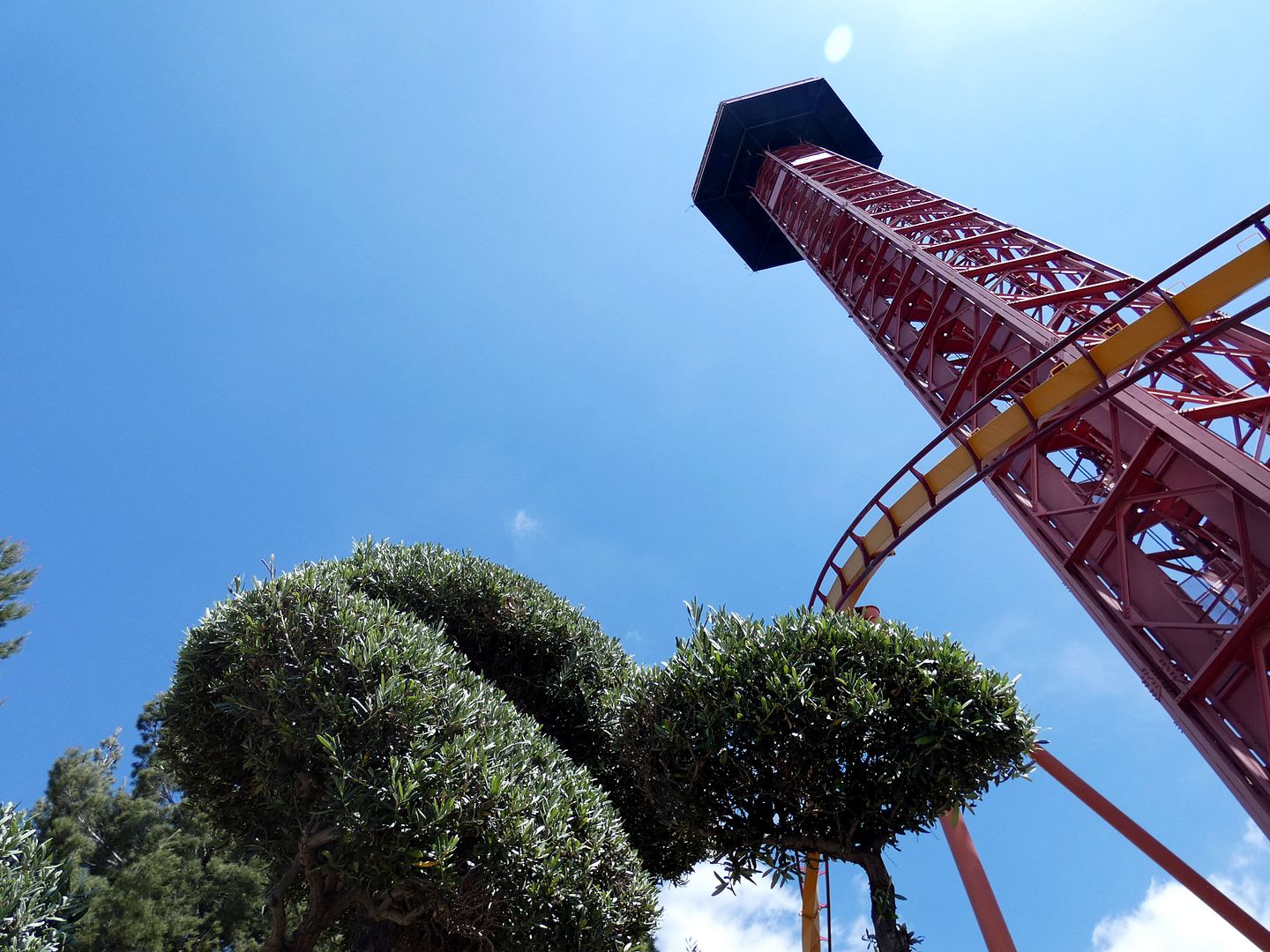
A pre-opening park brochure claimed that the Sky Tower elevator would "whisk visitors 365 feet above the park"—and, in total, the tower stands 386 feet high (or the equivalent of 32 stories).
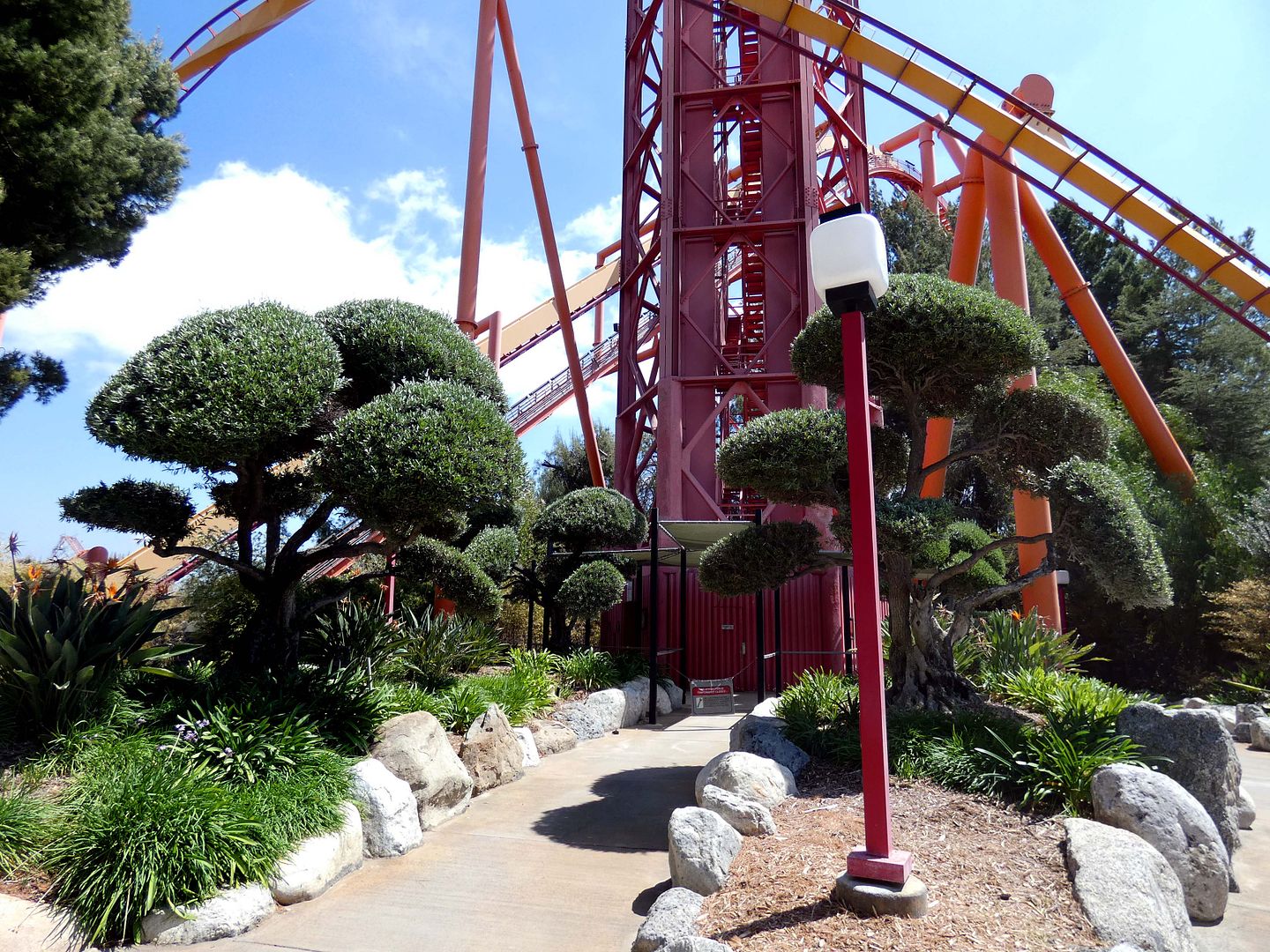
Miraculously, it survived the 1971 Sylmar earthquake, which occurred just a couple of months before the park's grand opening.
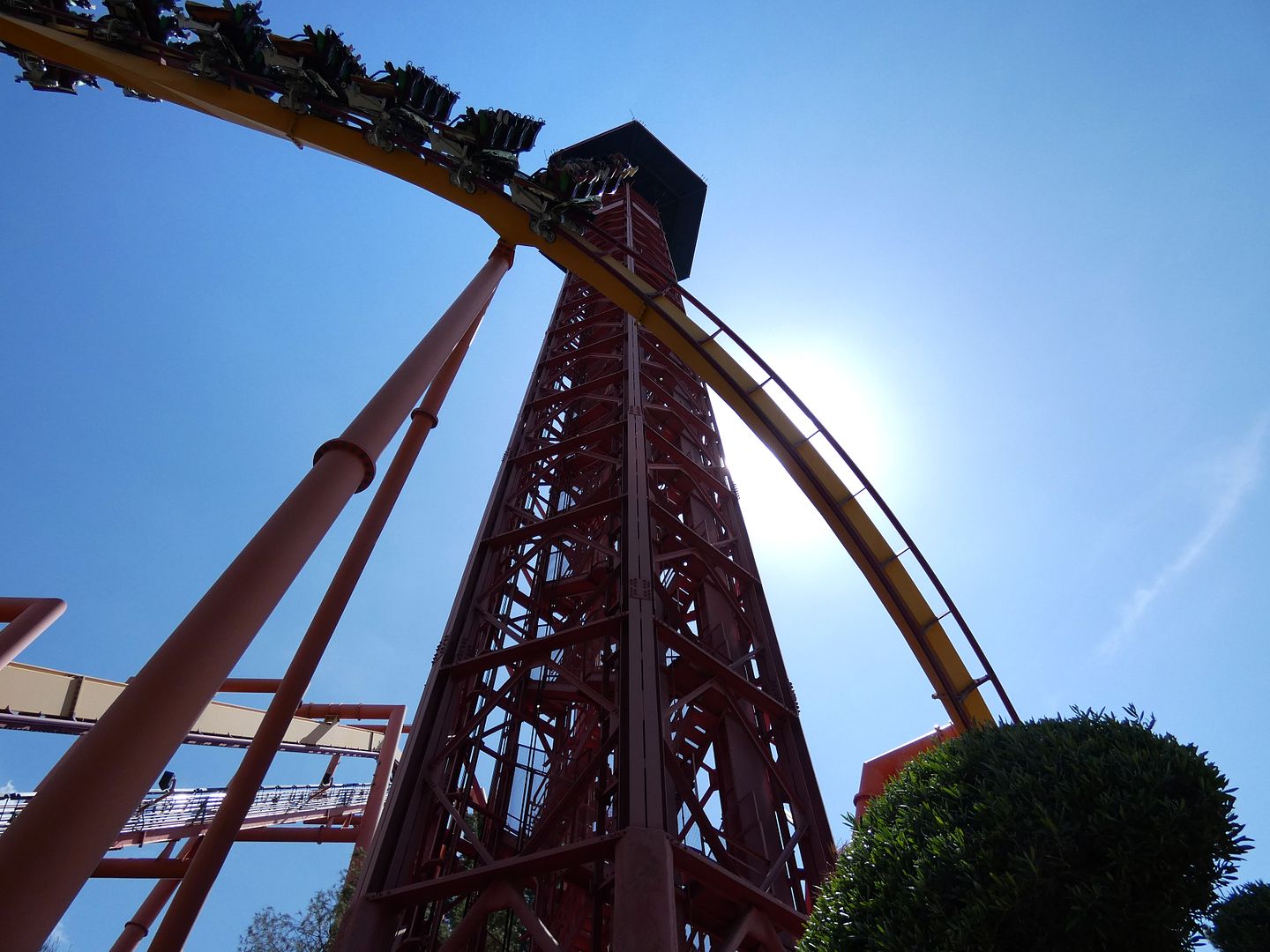
At one time, the hexagonal top of the tower housed a museum of Magic Mountain history. But the elevator's last ride for the public was in 2014.
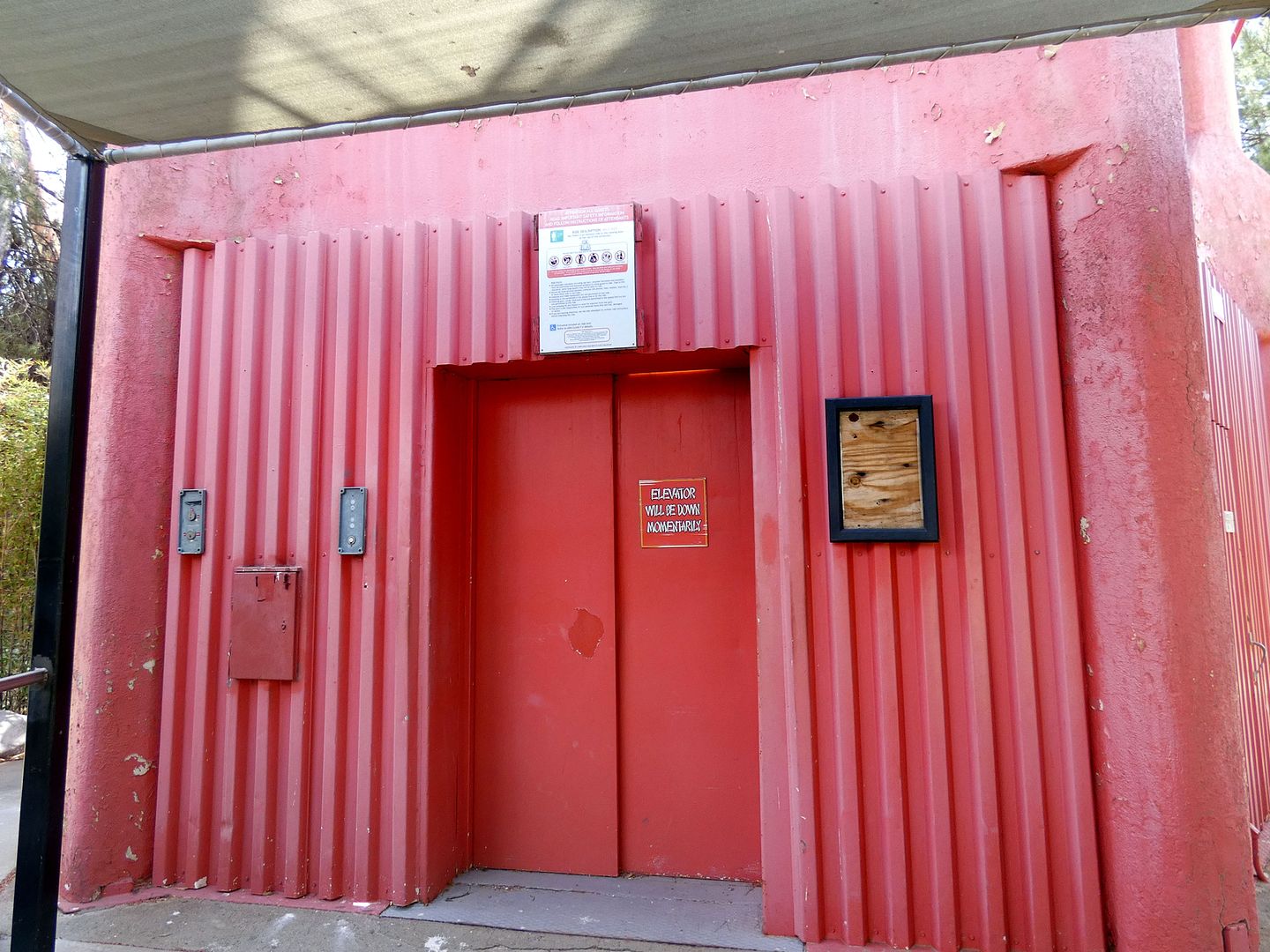
Although it originally opened with a yellow paint job, its red hue matches the color scheme of the rest of Samurai Summit.
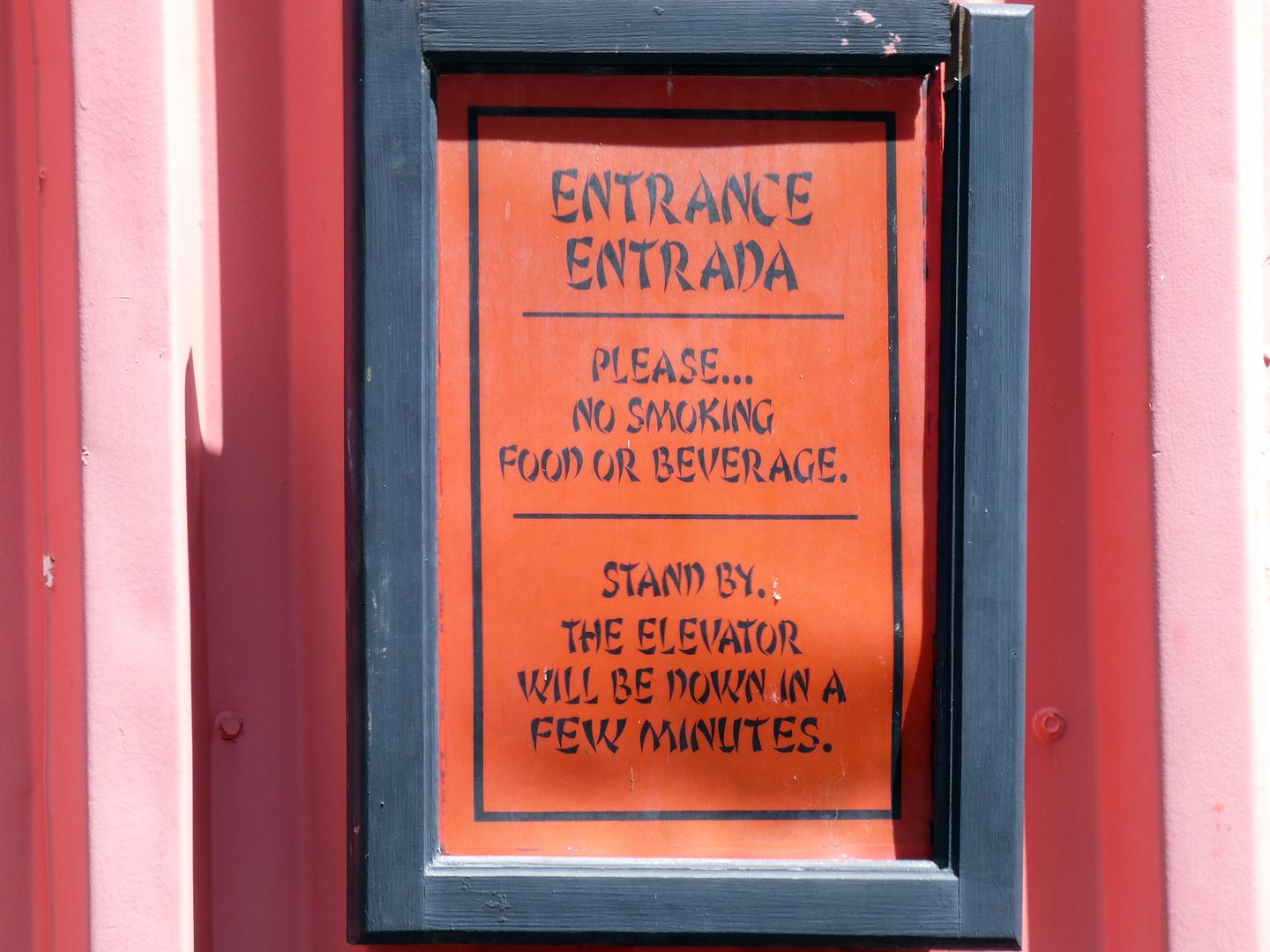
And despite what the sign says, the elevator will not be down in a few minutes.
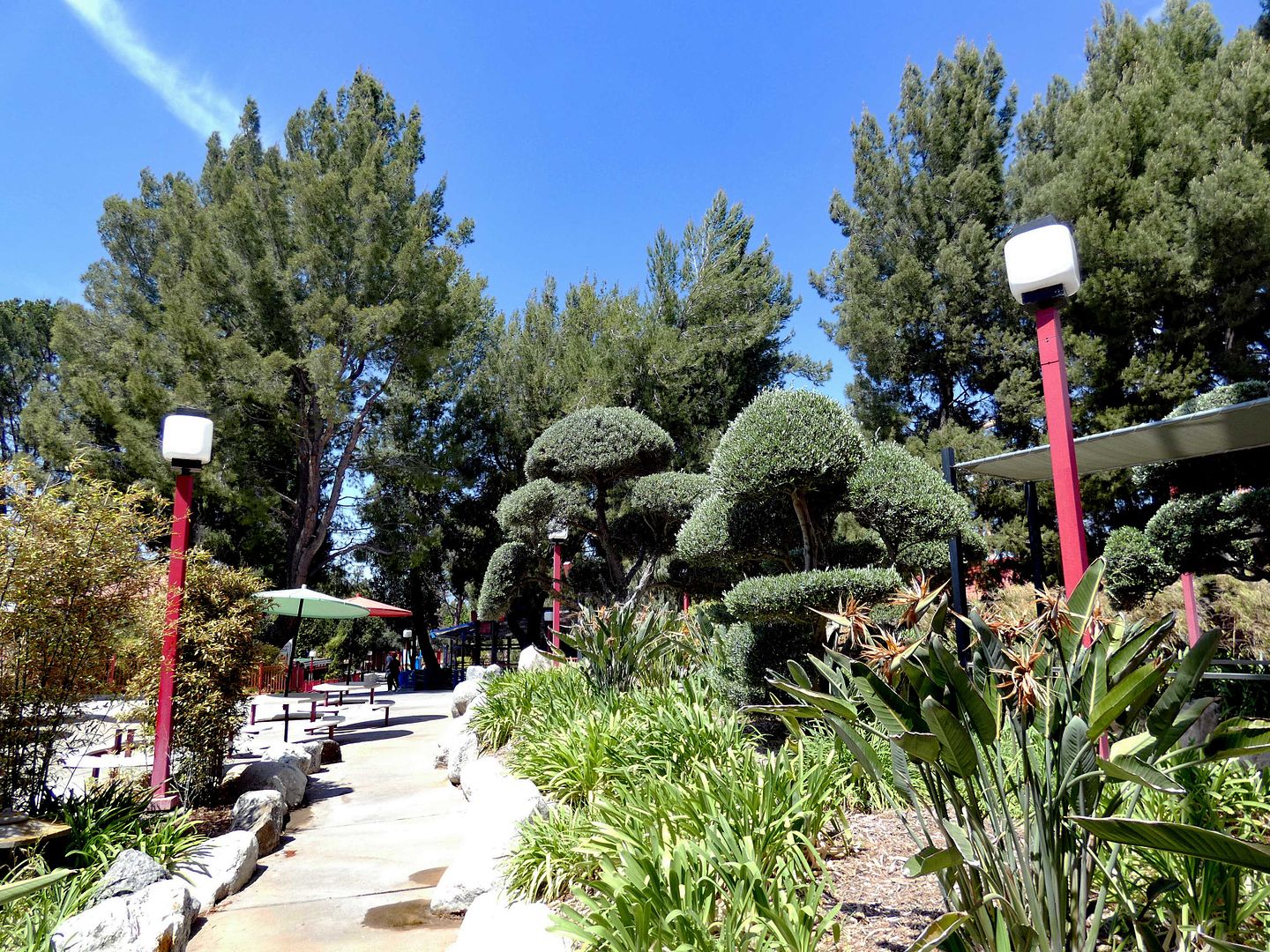
There's so much they could do with that tower to attract visitors to the park and keep them there longer, from a restaurant to a cocktail bar to an entertainment pavilion.
Whenever it reopens—and God, I hope it does—I'll be sure not to miss out on it again.
Adapted loosely from my KCET SoCal Wanderer article "Beyond Colossus: Tracing 50 Years of Thrilling History at Six Flags."
Related Posts:

No comments:
Post a Comment